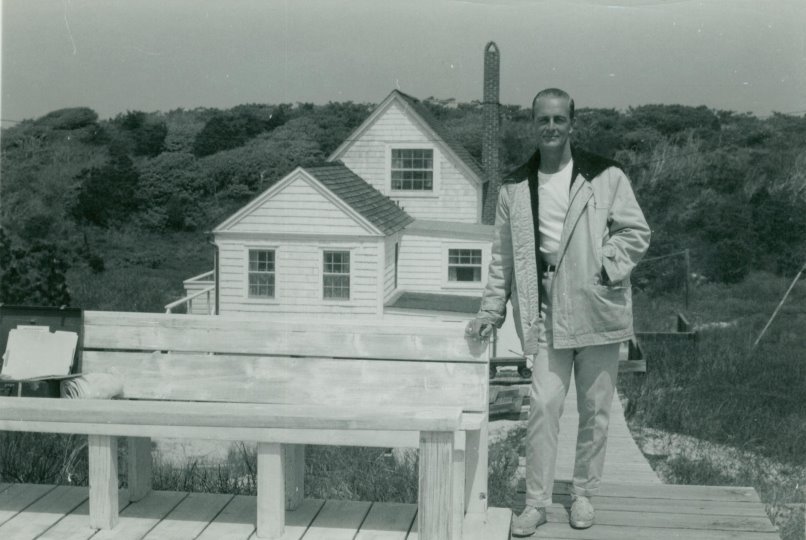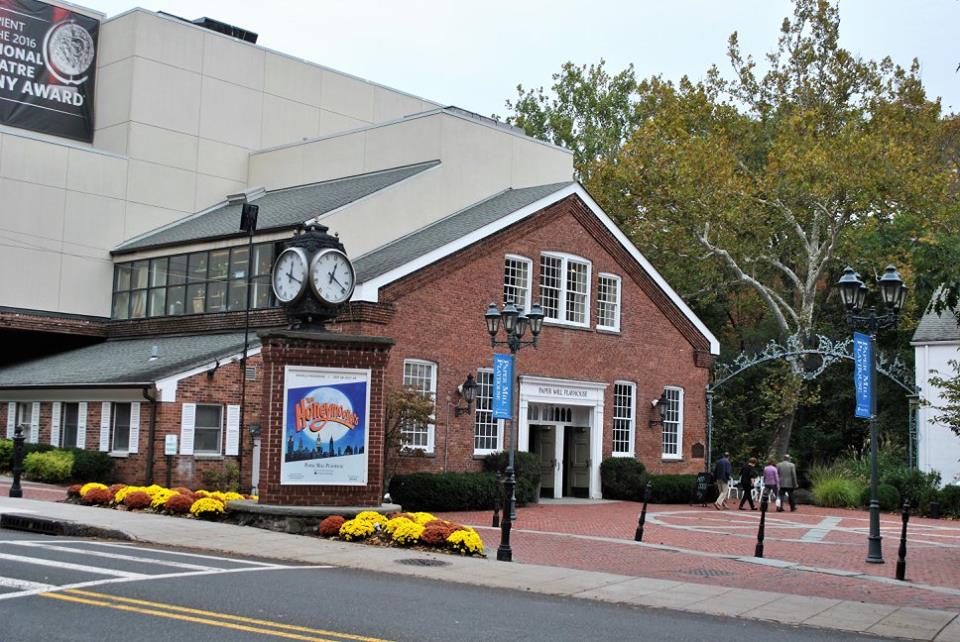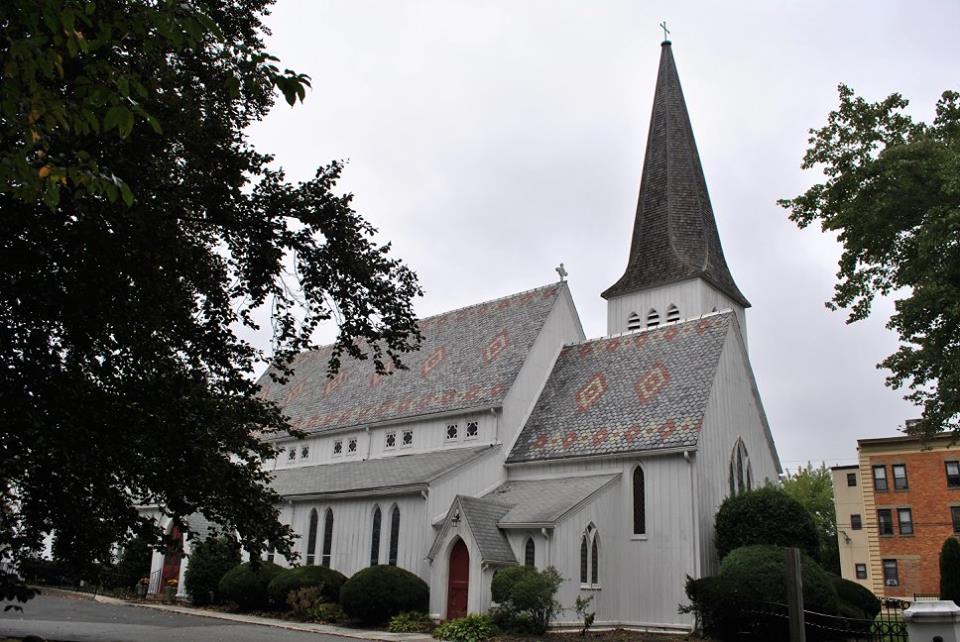Queer Places:
Paper Mill Playhouse, 22 Brookside Dr, Millburn, NJ 07041, Stati Uniti
Cherry Lane Theatre, 38 Commerce St, New York, NY 10014, Stati Uniti
Cherry Grove Community House and Theater, 180 Bayview Walk, Bay Shore, NY 11706, Stati Uniti
Carrington House, Lewis Walk, at eastern terminus of Ocean Walk, Yaphank, NY 11782, USA
St Stephen, 119 Main St, Millburn, NJ 07041, Stati Uniti
 Frank Carrington was born on September 13, 1894 on an army base on Angel
Island, California. This birth date was drawn from federal census records (the
social security death index differs slightly, listing Carrington's birth date
as 1893). However, Carrington was generally evasive about his age and
frequently exaggerated his youth. His World War II draft registration card
lists his birth date as September 13, 1896, a Freemason's member guide lists
his birth date as 1901, and his obituary does not assign a date to his birth.
Frank Carrington was born on September 13, 1894 on an army base on Angel
Island, California. This birth date was drawn from federal census records (the
social security death index differs slightly, listing Carrington's birth date
as 1893). However, Carrington was generally evasive about his age and
frequently exaggerated his youth. His World War II draft registration card
lists his birth date as September 13, 1896, a Freemason's member guide lists
his birth date as 1901, and his obituary does not assign a date to his birth.
Frank's father, Major Frank de L. Carrington (1855-1940), was an army
commander. Born in Georgia, Major Carrington served during the "Sioux
Uprisings" in the West, was an instructor with the California National Guard,
and led a regiment in the Philippine Islands (Anon 1940 : 27). Carrington's
mother, Nina, was born in Pennsylvania in 1863. Frank had two elder sisters ,
Leighla (b. 1887) and Gene (b. 1893). In 1900, census records show that the
family resided in the Vancouver Barracks in the State of Washington with
Nina's mother, Carolina Adimson, and a servant.
Frank Carrington was said to have been interested in theater from his
earliest childhood, writing plays by the age of six and working at the
Pasadena Playhouse by twelve. Carrington's father retired in 1910, and the
family moved to Short Hills in Millburn Township, New Jersey. From the family
home on Park Road, Carrington later claimed he could hear the steam whistle of
Millburn's Diamond Paper Mill, which he would eventually convert into a
theater (Goldsmith 1945: X1 ). Carrington worked in a law office during the
day and studied theater at night; despite being discouraged by his father, he
doggedly pursued a career in the arts (Reynolds 1999: 11 ). Carrington was a
member of the Freemasons, and a member guide states that he was "with the US
Navy in World War I" (Denslow 1957: 184). The 1930 federal census indicates
that he and his sister Gene were both living with their parents on Park Road.
In that year, Carrington's profession is listed as theater director.
Carrington was involved in establishing the Cherry Lane Theatre in New York
and worked in several other theaters in New York City and Newark (Reynolds
1999: 11 ).
Carrington met Antoinette Quinby Scudder, with whom he would have a long
and fruitful business partnership, in the 1920s, while starring in a play that
she had written at a community theater on 5th Avenue and 12th Street in New
York. Scudder, an aspiring painter, poet, and playwright, was born in 1886 to
a prominent New Jersey family. She was the daughter of Wallace M. Scudder,
founder of the Newark Evening News, and granddaughter of James M. Quinby,
three- time mayor of Newark and a member of Congress. Antoinette Scudder
studied at Columbia University, the Art Students League of New York, and the
Cape Cod School of Art (Reynolds 1999: 10). Scudder and Carrington first
teamed up in the late 1920s, founding a dramatic branch of the Newark Art Club
and then establishing the Newark Art Theatre in the late 1920s (Anon 1958:
28). Also in the late 1920s, Carrington purchased his summer home in Fire
Island from another Millburn resident, Frederick Marquet.

Paper Mill Playhouse, Millburn
In 1934, Carrington and Scudder responded to an advertisement for the sale
of an abandoned 19th century paper mill in Millburn, New Jersey. The former
Diamond Paper Mill was a brick building on a brook, within walking distance of
the railroad and an easy commute to both Newark and New York. Antoinette
Scudder purchased the mill and spent over a million dollars to transform it
into a substantial well-planned theater, using the services of her architect
cousin, Henry D. Scudder. Carrington and Scudder founded the Paper Mill
Playhouse "to create a greater interest in art, music, drama , history ,
literature, education, and theatre" (Reynolds 1999: 7). The playhouse was
decorated in a rustic Arts and Crafts style, referencing Colonial and Shaker
design precedents, likely influenced by Carrington.
The Paper Mill Playhouse was conceived as a "civic drama center , modeled
after European art centers." Typical of the playbill in its earliest days of
operation were "straight plays," by Pearl Buck,
Noel Coward, and George Bernard Shaw (Steinberg 1952: X3). However, from
its inception, Carrington and Scudder were also conscious of the Paper Mill's
place within the burgeoning rural theater movement, in which high-quality
theater employing a combination of established actors and new talent presented
itself in small town and rural settings and embraced a folksy collaborative
atmosphere. Carrington emphasized: "I want to build a real community theatre
where members do everything. Here's where people should learn to act, direct,
work the lights, make wigs and shoes, and learn the business side too" (Ibid).
The playhouse presented a wide variety of arts, ranging from dramatic
sketches, vaudeville, children's theater, ballet, classical music, art
exhibits, and lectures. While Scudder 's connections in society and the press
helped to finance and advertise the theater, Carrington's connections in
theater gained the support of many prominent actors. Early productions
featured such talent as Uta Hagen, Jose Ferrer, and
Eva La Gallienne. Carrington built a
distinguished list of sponsors, including
Eleanor Roosevelt, Tallulah Bankhead,
George M. Cohan, and Clifton Webb, among
others. In the early years, the team garnered tremendous success, with lines
and crowds surrounding the box office before performances. Nevertheless, the
playhouse retained a collaborative local atmosphere. In addition to co-owning
the playhouse, Carrington directed and acted in many of the theatri cal
productions, and designed sets. Carrington's sister Gene ran an art gallery in
the playhouse displaying the works of local artists (Klein 1983 : NJ17).
In 1939, Carrington convinced several prominent actors to appear in Paper
Mill productions at reduced salaries to benefit the British War Relief (Anon
1941 : 28). In the same year, he established the New Jersey Theatre Festival.
World War II almost shut down the rural theater movement, since gas and tire
rationing prevented many theatergoers from making pilgrimages to country
playhouses . The Paper Mill, however, saved by its easy train and bus
accessibility, was one of the few that kept the flame of rural theater alive
(Bamberger 1944, X1 ). The train schedules to and from New York were
reportedly synchronized to the Paper Mill 's performance times (Reynolds 1999:
23) .
During the 1940s and 50s, the playhouse distinguished itself as a venue for
operettas and musicals, responding to audience demand. In the post-war era,
the rural theater movement had regained momentum, and the Paper Mill generally
benefited from the boom (Anon 1946: 45). However, with the return of
prosperity and the proliferation of cars, many would- be New York City and New
Jersey theatergoers retreated to cottages in the summer. The Paper Mill took
the cue and operated only in the fall, winter, and spring (Steinberg 1952:
X3). This allowed Carrington to leave his primary residence, a converted barn
on Brookside Drive near the playhouse (Freeman 1975: 26), and retreat to his
own summer cottage on Fire Island. The New York Times reported that "Even
Carrington's office [at the Paper Mill Playhouse] is festooned with his own
seascapes of Fire Island, turned out at such times as he is not busy casting,
directing ... producing, and rewriting" (Goldsmith 1945: X1 ).
Although the Paper Mill Playhouse occupied the bulk of Carrington's
professional time, his commitment to theater extended beyond Millburn. He
directed and produced for the Theatre Guild, an important New York City
theatrical society, and the Shubert Theatre in New York (Denslow 1957: 184)
and he helped to found and run the Arts Project on Cherry Grove in Fire Island
(Newton 1993: 52). Carrington had a talent for gaining the friendship,
support, and enthusiasm of his associates, and despite his active involvement
in a myriad of prominent projects, he tended to keep himself somewhat out of
the spotlight. "Although described as a 'patrician' and called 'Mr.
Carrington' by everyone connected to Paper Mill, he was always interested in
and thoughtful of his staff and the performers who appeared there. In turn, he
received devotion and complete loyalty from all of them" (Reynolds 1999: 11 ).
Carrington was able to hire many of the most popular stars of stage and
screen, including Lillian Gish, Myrna Loy, and Shelley Winters, to perform in
the productions of the 1950s and 60s. The New York Times called the playhouse
"one of the foremost operetta theatres in the country" (Anon 1960: 17).
Carrington directed the productions with his co-director Agnes Morgan, a
writer and director with experience in many New York City and Philadelphia
theaters. Productions attracted established stars, such as June Allyson, Joan
Fontaine, George Hamilton, Vivian Blaine and others. They also introduced many
younger artists to the stage; these included
Carol Channing, Gene Wilder, Jane
Fonda, Liza Minnelli, Bernadette Peters, and Sandy Duncan (Reynolds 1999: 23).
Antoinette Scudder died in 1958. After several attempts at finding a new
partner for his work at the Paper Mill, Carrington finally settled on Angelo
Del Rossi. Under the Del Rossi partnership, the Paper Mill Playhouse came full
circle and began to focus more exclusively on plays rather than musicals. It
exchanged productions with other regional theaters in New York, Connecticut,
and Massachusetts and retained its prominent place in the regional theater
movement. In 1971, the governor of New Jersey proclaimed the Paper Mill
Playhouse to be the State Theatre of New Jersey (Reynolds 1999: 1 0) .

St Stephens Episcopal Church, Millburn
Carrington continued to work in partnership with Del Rossi, although his
involvement became less active after the early 1970s, when his health became
poor. When Carrington died of cancer in 1975, the playhouse was "the state's
largest performing arts organization and one of the country's most widely
attended institutions." While it retained the character of a regional theatre,
it was internationally respected (Catinella 1981; NJ2).
Del Rossi became executive director of the Paper Mill Playhouse after
Carrington's death in 1975. In 1980 a major fire severely damaged the
playhouse building. However, with the support of prominent actors and
politicians, it was rebuilt and quickly regained its stride. Since that time,
the playhouse has continued to attract prominent performers and varied
productions and is still widely recognized as an important and deeply rooted
regional theater.
My published books:


BACK TO HOME PAGE

- https://www.nps.gov/nr/feature/places/pdfs/13001057.pdf
 Frank Carrington was born on September 13, 1894 on an army base on Angel
Island, California. This birth date was drawn from federal census records (the
social security death index differs slightly, listing Carrington's birth date
as 1893). However, Carrington was generally evasive about his age and
frequently exaggerated his youth. His World War II draft registration card
lists his birth date as September 13, 1896, a Freemason's member guide lists
his birth date as 1901, and his obituary does not assign a date to his birth.
Frank Carrington was born on September 13, 1894 on an army base on Angel
Island, California. This birth date was drawn from federal census records (the
social security death index differs slightly, listing Carrington's birth date
as 1893). However, Carrington was generally evasive about his age and
frequently exaggerated his youth. His World War II draft registration card
lists his birth date as September 13, 1896, a Freemason's member guide lists
his birth date as 1901, and his obituary does not assign a date to his birth. 


